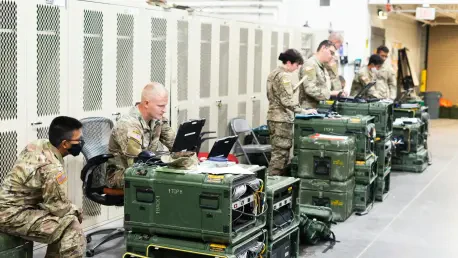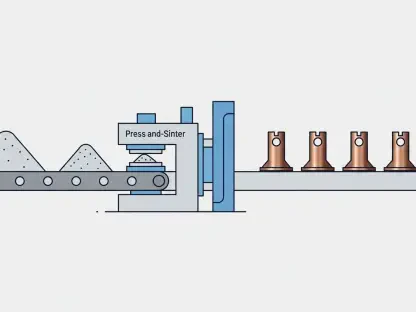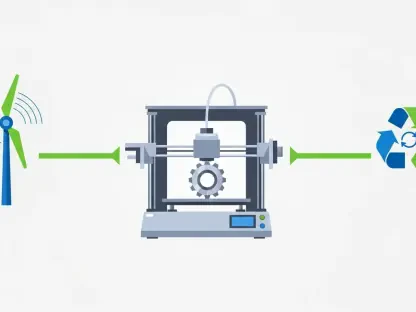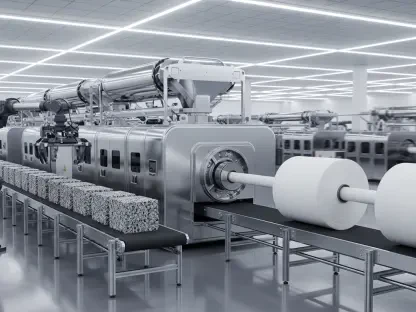Setting the Stage for Defense Market Expansion
In a landscape where global defense spending is projected to surpass $2.5 trillion by 2027, Aurora Labs Ltd (A3D), headquartered in Canning Vale, Australia, has made a strategic move that could redefine its position in this high-stakes arena. As of this year, 2025, the company has restructured its board with a clear focus on penetrating the defense sector, particularly in advanced propulsion systems for unmanned aerial systems (UAS). This analysis aims to dissect the market implications of these leadership changes, exploring how they align with broader industry trends and what they signal for Aurora Labs’ growth trajectory. The defense market, driven by escalating geopolitical tensions and technological innovation, presents both immense opportunities and formidable challenges. This examination seeks to uncover how Aurora Labs’ recalibrated leadership can capitalize on these dynamics to carve out a competitive edge.
Decoding Market Trends and Strategic Shifts
Defense Sector Growth: A Booming Opportunity
The defense industry is experiencing unprecedented growth, fueled by rising budgets across the Asia-Pacific region and beyond. Australia, a key player in this space, benefits from alliances like AUKUS, which prioritize innovation in military technologies such as UAS. Market data indicates that the global UAS market alone is expected to grow at a compound annual growth rate (CAGR) of over 12% from 2025 to 2030, driven by demand for advanced surveillance and combat capabilities. Aurora Labs, previously known for its expertise in 3D metal printing, is strategically pivoting to meet this demand by focusing on propulsion systems—a niche yet critical component of UAS technology. This shift aligns with the broader trend of defense contractors diversifying into specialized manufacturing to address specific military needs.
Board Restructuring as a Market Signal
Aurora Labs’ decision to appoint David Trimboli as chairman and elevate Andrew Garth to Executive Director – Strategy & Strategic Partnerships reflects a calculated response to market demands. Trimboli’s international business background, including his tenure at Glencore International AG and leadership at Seefeld Investments, positions the company to tap into global defense markets through robust financial strategies and partnerships. Meanwhile, Garth’s extensive experience as an aeronautical engineer and defense advisor, with past roles in projects like the Joint Strike Fighter, ensures that technical innovation remains at the core of Aurora Labs’ offerings. This dual approach signals to investors and competitors alike that the company is serious about balancing commercial expansion with sector-specific expertise, a critical factor in gaining traction within defense procurement circles.
Competitive Landscape and Emerging Challenges
Navigating the defense market is no small feat, given its complex regulatory frameworks and intense competition from established players like Lockheed Martin and Northrop Grumman. Aurora Labs faces the challenge of meeting stringent military standards while scaling production capabilities for UAS propulsion systems. Additionally, market analysis highlights potential risks such as supply chain disruptions—a persistent concern in defense manufacturing due to reliance on specialized materials. However, the company’s focus on additive manufacturing technologies could provide a competitive advantage by enabling faster, more cost-effective production cycles. As defense budgets expand, particularly in Australia and allied nations, Aurora Labs must also contend with evolving cybersecurity mandates for military tech, which could impact development timelines and costs if not addressed proactively.
Forecasting Aurora Labs’ Market Position
Capitalizing on UAS Propulsion Demand
Looking ahead, the UAS segment represents a significant growth driver for Aurora Labs. Projections suggest that propulsion systems, a cornerstone of UAS efficiency, will see heightened investment as militaries prioritize longer-range and more durable systems. With Garth’s deep-rooted expertise in aerospace and defense policy, the company is well-placed to forge strategic alliances with government bodies and prime contractors, potentially securing lucrative contracts. Furthermore, Aurora Labs’ background in 3D printing could disrupt traditional supply chains by reducing lead times and costs, positioning it as an innovator in a market often criticized for inefficiencies. If executed effectively, this focus could elevate the company’s market share within the niche UAS propulsion space over the next five years.
Global Expansion and Partnership Potential
Trimboli’s international acumen offers another layer of opportunity, particularly in expanding Aurora Labs’ footprint beyond Australian borders. Defense markets in the United States and the United Kingdom, key partners under frameworks like AUKUS, present fertile ground for collaboration. Market forecasts indicate that cross-border partnerships will become increasingly vital as nations pool resources to counter shared security threats. Trimboli’s experience in commodities and global trade could also stabilize supply chain logistics—a critical concern given the volatility of raw material availability for defense production. However, penetrating these markets will require navigating complex export controls and building trust with foreign stakeholders, tasks that will test the new board’s strategic prowess.
Risks and Mitigation in a Volatile Sector
Despite the optimistic outlook, Aurora Labs must brace for inherent risks in the defense sector. Regulatory shifts, such as tighter export restrictions or enhanced data security requirements, could pose hurdles to rapid market entry. Economic analyses also point to potential fluctuations in defense spending if geopolitical tensions ease, which might dampen demand for UAS technologies. To mitigate these risks, the company should prioritize flexible manufacturing processes and diversify its client base across commercial and military sectors. Building a resilient operational framework will be essential to weather market uncertainties, ensuring that Aurora Labs remains agile in response to both opportunities and setbacks.
Reflecting on Strategic Implications
Looking back, Aurora Labs’ board restructuring in 2025 emerged as a pivotal moment that aligned its leadership with the surging demands of the defense market. The strategic pairing of David Trimboli’s global business insight with Andrew Garth’s sector-specific expertise laid a strong foundation for tackling the complexities of defense manufacturing. For stakeholders, the key takeaway was the need to adapt swiftly to industry trends through targeted leadership changes. Moving forward, the company should focus on deepening partnerships within the AUKUS framework while investing in cutting-edge additive manufacturing to maintain a competitive edge. Additionally, continuous monitoring of regulatory landscapes and supply chain dynamics will be crucial to sustain growth. This transformation offered a blueprint for other firms aiming to break into high-stakes sectors, demonstrating that strategic foresight in leadership could unlock untapped market potential.









